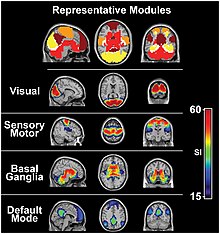Sensory Systems and Receptors
- Most sensory systems have a quiescent state
- Linear time-invariant systems have a well-defined quiescent state
- Passive sensory systems also have a well-defined quiescent state
- Nonlinear, nonpassive sensory organs may not have a well-defined quiescent state
- The cochlea has a quiescent state defined by the vibratory energy it receives
- The five traditional human senses are touch, taste, smell, vision, and hearing
- Other senses accepted in most mammals include pain, balance, kinaesthesia, and temperature
- Some nonhuman animals possess alternate senses like magnetoreception and electroreception
- Receptors can be categorised into chemoreceptors, photoreceptors, mechanoreceptors, and thermoreceptors
- Chemoreceptors detect chemical stimuli
- Photoreceptors respond to light
Sensory Cortex
- Sensory cortex refers to multiple areas of the brain
- Primary and secondary cortices process different senses
- Somatosensory cortex is located in the parietal lobe
- Visual cortex is located in the occipital lobe
- Auditory cortex is located in the temporal lobe
- Primary olfactory cortex is located in the temporal lobe
- Gustatory cortex consists of anterior insula and frontal operculum
Sensory Perception and Neural Processing
- Sensory perception is the process by which the brain receives and interprets information from the senses
- Neural processing refers to the way the nervous system receives, transmits, and integrates sensory information
- Neural pathways transmit sensory information from the peripheral nervous system to the brain
- The brain processes and integrates sensory information to create a coherent perception of the world
- Sensory systems work together to provide a comprehensive perception of the external environment
- Different brain regions are involved in processing and interpreting sensory information
- Association areas integrate information from multiple sensory modalities and higher-order cognitive processes
- The thalamus acts as a relay station, transmitting sensory information to the appropriate brain regions
- The prefrontal cortex plays a role in attention, decision-making, and the modulation of sensory perception
Chemoreceptors and Photoreceptors
- Chemoreceptors detect chemical stimuli and convert them into electrical action potentials
- Distance chemoreceptors receive stimuli in gases through olfactory receptor neurons and neurons in the vomeronasal organ
- Direct chemoreceptors detect stimuli in liquids, such as taste buds in the gustatory system
- Chemoreceptors play a role in olfaction and taste perception
- Photoreceptors convert light into electrical signals through phototransduction
- Cones are responsible for color vision
- Rods enable vision in dim lighting
- Ganglion cells are involved in conscious vision
Sensory Perception and Behavior
- Sensory perception influences behavior and guides our actions and responses
- Sensory information helps us navigate and interact with the environment effectively
- Sensory perception can be influenced by factors such as expectations, emotions, and past experiences
- Sensory deficits or impairments can have significant impacts on an individual's daily life and functioning
- Understanding sensory perception can have implications for designing environments and interventions to enhance well-being
The sensory nervous system is a part of the nervous system responsible for processing sensory information. A sensory system consists of sensory neurons (including the sensory receptor cells), neural pathways, and parts of the brain involved in sensory perception and interoception. Commonly recognised sensory systems are those for vision, hearing, touch, taste, smell, balance and visceral sensation. Sense organs are transducers that convert data from the outer physical world to the realm of the mind where people interpret the information, creating their perception of the world around them.


The receptive field is the area of the body or environment to which a receptor organ and receptor cells respond. For instance, the part of the world an eye can see, is its receptive field; the light that each rod or cone can see, is its receptive field. Receptive fields have been identified for the visual system, auditory system and somatosensory system.